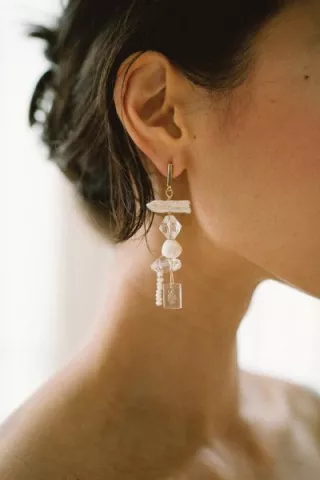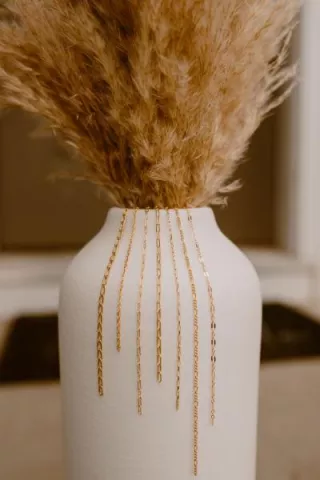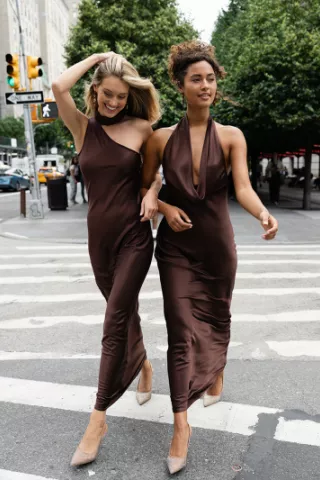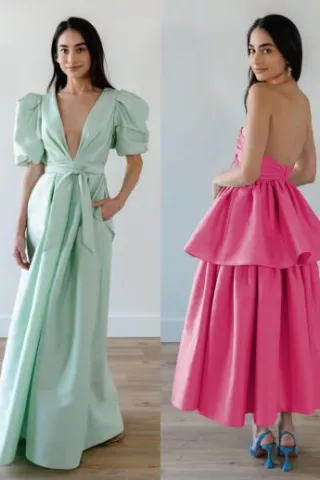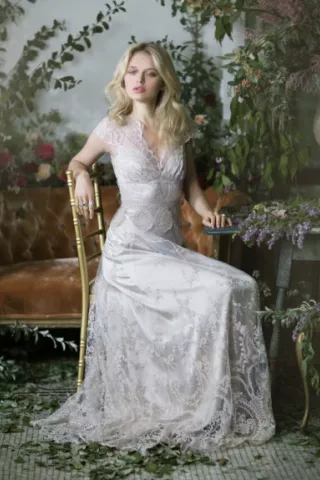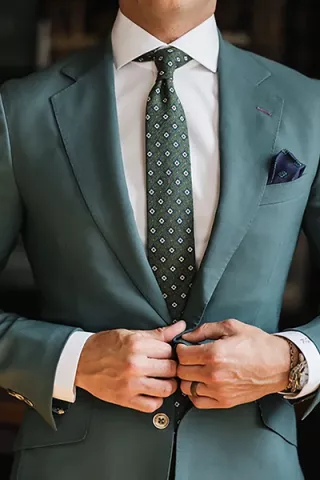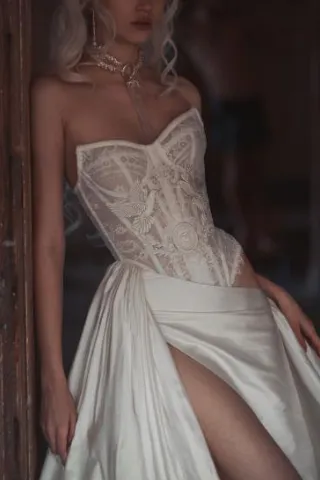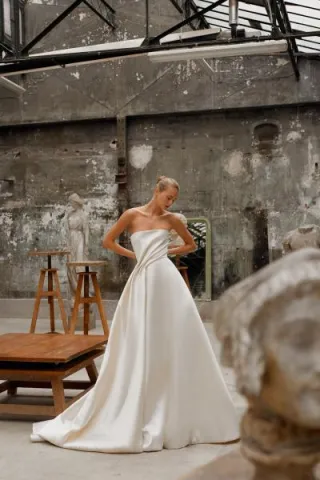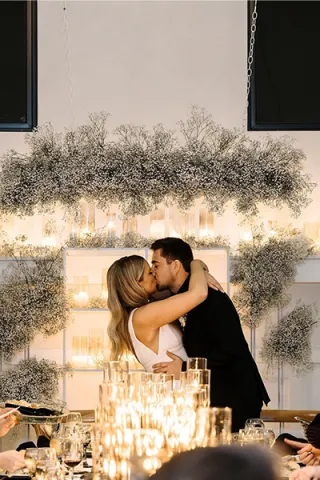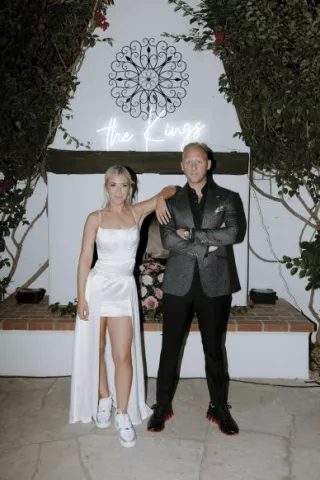Want a dress reflective of your personality? Custom wedding-wear may be your ticket. Read on to learn more about local resources, ways to prepare for your initial meeting with your designer, tips and timelines.
Prep work
It may sound counterintuitive, but many custom wedding-wear designers encourage clients to visit boutiques and shops to try on ready-made dresses. “It’s good to come in to your first meeting with some idea of style so the conversation can get started,” says Kristen Olsen, designer and owner of the Dressmaker in Edina.
Being ready to discuss your vision for your dress is crucial to getting the creative process going. Pictures speak a thousand words, so bring tear sheets of your favorite looks (bridal or not) to your initial consultation.
Heirloom gowns
If you’re feeling nostalgic, consider incorporating an heirloom dress or details of an heirloom dress into your custom gown. Don’t worry if your mother or grandmother’s dress is out of style or designed for a different season than your own; custom dressmakers are pros at seeing what attributes in every gown will work for your style and season. Remember, before you head to the designer, find the dress (or dresses) you want to use and have it professionally cleaned if necessary, so it’s ready to give to the dressmaker.
Budget-wise, don’t plan on saving a ton of dough by picking custom over designer couture. Average prices for custom gowns range between $1,000 and $3,500, depending on the fabric, embellishments and detail work.
Fittings
Once you’ve settled on having a custom gown made, realize that the design process doesn’t happen overnight, or even within a single month. Each designer will have a different process for making your gown over the course of several studio visits. Some will listen to your ideas, take a look at your tear sheets and start sketching. Others will listen and then drape fabric, seeing what colors, textures and weights work best with your body or the feel of your event.
Between your first consultation and your follow-up appointment, be prepared to wait a bit. “I need time for the design to gel in my mind, especially if the vision for the dress wasn’t 100-percent clear,” says Brenda Foat, lead designer for Minneapolis-based Foat Design, which specializes in reconstructing heirloom gowns into modern masterpieces. If you settle on a hard-to-find duchess satin or Italian-made lace, it might take a while to be delivered. Also, if you’ve dreamt of a hand-embroidered skirt or bodice, plan on waiting a few weeks for the handiwork to be done.
Later meetings are when the true shape of your dress will develop. “By the second visit, I’ll usually have a muslin mock-up of the design ready for the bride to try on,” Olsen says. Other designers will have a large shell of a dress that they’ll pin and fit to your body and add detailing as the fittings progress.
Creativity
Each fitting is a time to communicate with your designer. Be open to the creative process. Sometimes it will be exactly right; other times it’ll go in another direction. All things considered, the evolution of your dress can take between four and six months.
After three to five fittings, your dress should be aisle-ready. Since multiple fittings will have taken place in the months leading up to your big day, instead of stressing about last-minute alterations, you’ll walk out the door with a dress that fits
perfectly.
Minnesota Dress Designers
Joynoelle: (Joy Teiken) Minneapolis, 612.209.7822 • joynoelle.com
The Dressmaker: (Kristen Olsen) Edina, 952.929.9475 • thedressmaker.com
Foat Design: (Brenda Foat) Minneapolis, 800.658.1448 • foatdesign.com
PFT Couture: (Pafoua Thao) St. Paul, 651.261.4185 • pftcouture.com
Carmelle Elizabeth: Minneapolis, 612.220.9714 • carmelleelizabeth.com


